#Sciuromorpha
Explore tagged Tumblr posts
Text
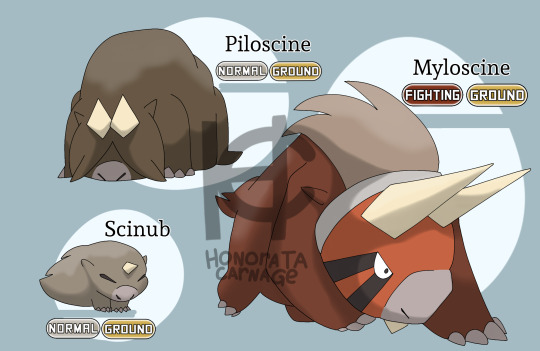
click for better quality!
Swinub convergent pokemon! instead of being based on a boar, Scinub is inspired by ancient horned gophers, from the clade Sciuromorpha!
therefore the 'sci' is for squirrel like animals instead of 'swi' that meant swines! Also the 'mylo' from "Myloscine" come from "Mylagaulinae", the proper subfamily of horned rodents!
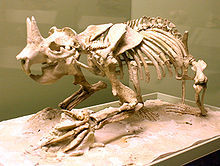
(WHY IS THE IMAGE SO SMALL?????)
anyways, tell me what y'all think!
------
request by @hazbinhotel97 ! (hope this is rat-like enough lol)
#my art#my art owo#pokemon#pokemon fanart#pokemon variants#pokemon variations#pokemon fan design#pokemon evolution#fakemon#convergent pokemon#swinub#swinub line#piloswine#mamoswine#ground pokemon#ground type#normal type#normal pokemon
137 notes
·
View notes
Text
Los roedores más comunes son los ratones, ratas, ardillas, tamias, puercoespines, castores, hámsteres, jerbos, capibaras y conejillos de indias. Capibara (Hystricomorpha), liebre saltadora (Anomaluromorpha), ardilla de manto dorado (Sciuromorpha), castor americano (Castorimorpha), ratón casero (Myomorpha).
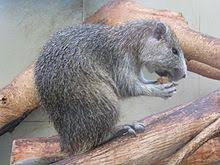
1 note
·
View note
Text
and all the squirrelies say im pretty fly for a https://en.m.wikipedia.org/wiki/Sciuromorpha

Give it to me baby (ahuh ahuh!!!!)
16 notes
·
View notes
Text

European edible dormouse (Glis glis)
Photo by Milo Manica
#european edible dormouse#dormouse#glis glis#glis#glirinae#gliridae#sciuromorpha#rodentia#euarchontoglires#placentalia#mammalia#tetrapoda#vertebrata#chordata
100 notes
·
View notes
Photo
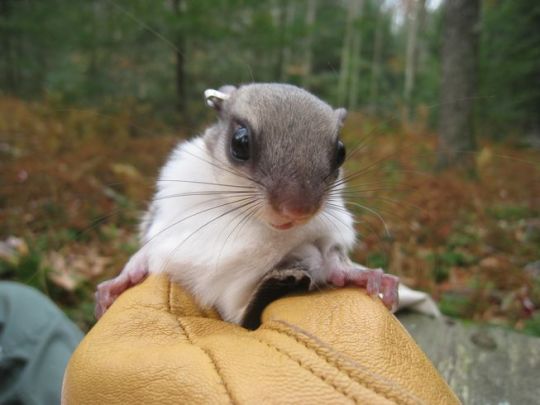
Why the future of West Virginia's rare flying squirrel looks bright | MNN
The squirrel — called the Virginia northern flying squirrel or more commonly the West Virginia northern flying squirrel (WVNFS) — was listed as an endangered species in 1985. But restoration efforts have helped the species rebound, and in 2013 the West Virginia northern flying squirrel joined an exclusive group of success stories — species that have been taken off the endangered list.
Since then, restoration work has ramped up. Now a new report assessing the status of the squirrel in its first five years since coming off of the endangered species list indicates there are many reasons to be optimistic.
Survival of the squirrel depends on survival of its habitat — red spruce-northern hardwood forest, which consists of red spruce, fir, beech, yellow birch, sugar or red maple, hemlock and black cherry. It used to be that the iconic, high-elevation red spruce forest blanketed hundreds of thousands of acres of the Central Appalachians. But much of that was destroyed in the late 1800s and early 1900s due to logging and wildfire.
"This habitat is really special," said Barb Douglas, U.S. Fish and Wildlife Service senior endangered species biologist. "There's some old-growth left, but a lot of it was cut over at the turn of the 20th century."
"If you go into a really old-growth spruce forest, it's mossy and green and smells good," added Laura Hill, a retired fish and wildlife biologist for the service. "It's surreal. It's quiet, the ground is spongy and soft. It's calming and soothing."
In the decades preceding and following the listing of the West Virginia northern flying squirrel, protection and restoration efforts were successful in bringing the red spruce-northern hardwood forest habitat back to more than 173,000 acres in West Virginia.
And the work didn't stop when the squirrel was taken off the endangered species list in 2013. In the following five years, more than 7,455 acres of West Virginia northern flying squirrel habitat has been created, protected or restored. Additionally, even without formal protections, federal biologists have coordinated with project proponents to keep habitat loss at a negligible level of 285 acres — amounting to 26 times more habitat saved than lost.
As a result, the five-year report finds that the squirrel remains well distributed across all seven core areas and continues to be found at new, expanded and historical sites, with long-term potential for a slowly growing population.
#Northern Flying Squirrel#West Virginia Northern Flying Squirrel#Glaucomys sabrinus fuscus#Glaucomys sabrinus#Glaucomys#Pteromyini#Sciurinae#Sciuridae#Sciuromorpha#Rodentia#Mammalia#mammal#squirrel#flying squirrel#conservation#forest
233 notes
·
View notes
Photo
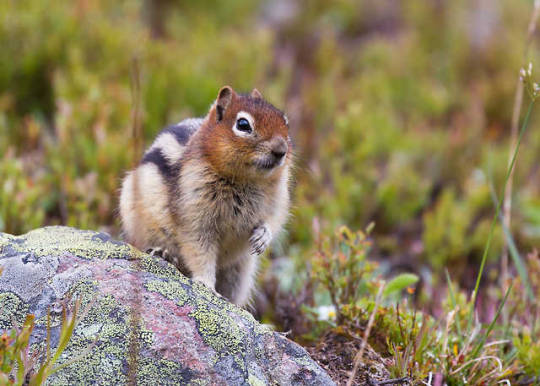
Ground Squirrel by Olga Vyshnyvetska
2 notes
·
View notes
Photo
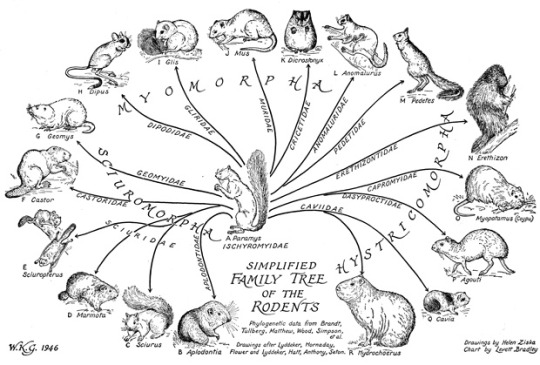
#rodents#rodentia#phylogeny#1946#evolution#Trees of Life: a Visual History of Evolution#2011#Theodore W. Pietsch#Myomorpha#Hystricomorpha#Sciuromorpha#taxonomy
8 notes
·
View notes
Photo

Marmota by ursbachmann
1 note
·
View note
Photo

Summer feels #Repost @photography.hinsche (@get_repost) ・・・ Vegetarian😝#spermophiluscitellus #ziesel #canondeutschland #CanonMoment #naturephotography #sciuridae #sciuromorpha #marmotini #xerinae #schlichtziesel #animal_bestshots #WildlifePlanet #InstaNatureFriends_ #nuts_about_squirrels #wildlifeplanet #animalpolis #animalelite #global4nature #igscwildlife #splendid_animals #destination_wild #worldbestshots #nature_prefection #petsqui
#nature_prefection#spermophiluscitellus#naturephotography#wildlifeplanet#nuts_about_squirrels#xerinae#schlichtziesel#animalelite#canonmoment#ziesel#canondeutschland#sciuromorpha#repost#animalpolis#global4nature#igscwildlife#worldbestshots#sciuridae#animal_bestshots#splendid_animals#petsqui#instanaturefriends_#marmotini#destination_wild
0 notes
Photo

Marmota by ursbachmann // They life high up in the mountains and sleep under the earth up to six month in the Wintertime. From time to time, they wake up to get some food.
0 notes
Text
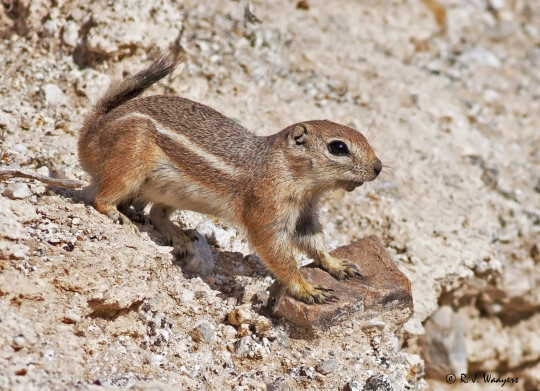
White-tailed antelope squirrel (Ammospermophilus leucurus)
Photo by Robyn Waayers
#white tailed antelope squirrel#antelope squirrel#ammospermophilus leucurus#ammospermophilus#marmotini#xerinae#sciuridae#sciuromorpha#rodentia#euarchontoglires#placentalia#mammalia#tetrapoda#vertebrata#chordata
39 notes
·
View notes
Photo
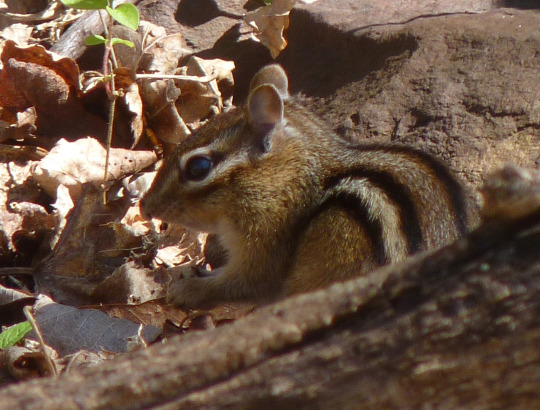
Eastern Chipmunk, Tamias striatus (by me)
#Eastern Chipmunk#Tamias striatus#Tamias#Marmotini#Xerinae#Sciuridae#Sciuromorpha#Rodentia#Mammalia#mammal#chipmunk#spring#Middlesex County#New Jersey#mine
12 notes
·
View notes
Text
Pest Control: Getting Rid of Rodents
There are actually around 4,000 rodent species categorized based mostly on their own anatomy similarities and distinctions. Over-all, a few significant teams with around 30 households make up the overall rodent population.
Frequent Rodent Sorts The greater common rodents drop into three key suborders. The suborder Sciuromorpha includes squirrels, chipmunks, marmots, woodchucks, prairie dogs, gophers, pocket mice, kangaroo rats, and beavers. The suborder Myomorpha is created up of mouse-like rodents and features a significant number of mouse and rat species, including hamsters, lemmings, voles, muskrats, gerbils, dormice, and jerboas. The suborder Hystricomorpha incorporates porcupine, capybara, nutria, agouti, cavy, mara, chinchilla, and several other species. Commensal Rodents Rats and mice are largely liable for feeding on up or contaminating a food stuff supply. These kinds of rodents are generally known as "commensal rodents" mainly because they live with or in close association to people. The most typical commensal rodents are the home mouse, the Norway rat as well as the roof rat. These rodents spoil our foods by contaminating it with feces, hair and dander. These pests are present in properties, supermarkets, and dining places all over America In combination with warehouses and food stuff processing facilities. The prevention and control of the commensal rodent population is a large concern in many states exactly where these pests have the ability to thrive. Rodent Pest Manage Selections Rodent pest Regulate is often managed in various strategies, determined by your where you reside, your need to be inexperienced along with your funds. The next gives advantages and disadvantages for a variety of Best Pest Control in dubai. Mechanical traps.
These traps are classified as the quickest and most reliable means to manage pest challenges. The trapping of mice has many positive aspects such as value, relieve-of-use, and protection. Quite a few property and business owners like traps since they can confirm which the pest Management support they hired bought them effects. Furthermore, it ensures that the rodents do not die in crawl Areas or basements the place They may be more difficult to eliminate. Traps employed along with other green pest Command approaches usually have the very best In general effects. In spite of these advantages, mechanical traps for mice and rat Regulate may be a little bit crude thinking about other methods currently. Animal enthusiasts may well not much like the cruelty aspect of how the rodent is killed. Also, this sort of devices positioned about an Lively residence or business enterprise might be dangerous to very little youngsters and Animals. Eco-friendly Chemical Pest Command.
This pest Management service delivers several rewards and couple of shortcomings. Chemical pest Manage is on the market that's designed up of decreased or non-poisonous products. Some pest prevention products and services will supply chemical repellants that come with organic or normal products created to be both of those efficient and biodegradable. This Regulate option is eco-friendly. They are also considerably less harmful and thus are safer to own placed on your home In case you have compact kids or pets. Seem Repellents.
Rodent repellents that use seem are regarded as far more humane than common mice traps. This method makes use of a tool that places out an intense sound that displaces rodents, triggering them to flee from a home. This option is an excellent pest Regulate method for all those with tiny little ones or other Animals that need to be kept Protected. One of several only Drawbacks into the repellent is that you might have a more difficult time obtaining the rodents to completely try to avoid your private home. It also does not usually get the complete mouse or rat populace to go away. Standard Pest Handle Chemical compounds.
Mouse and rat poison remains to be broadly utilised as it gets rid of rodents rapidly and properly. The bromethalin normally Utilized in rodenticide brings about a fast Loss of life to the pest. Versions of this and numerous other chemicals are available for indoor or out of doors software. As just one would be expecting, the chemical compounds Utilized in these rat poisons are hugely lethal and should not be used if there are tiny youngsters or animals that could come in connection with it. You can find probable wellbeing pitfalls connected with these chemical substances touching skin or remaining inhaled likewise.
#Best Pest Control in dubai#Pest control in dubai#Cheap Pest Control dubai#Quality Pest Control dubai#Bedbugs control in dubai#Pest control near me
0 notes
Text
The CP and MH gang as things that drunk people have said
-Jeff: Basically we have killed this society. But there's flavored vodka so it's ok!
-Jane: OMFG there is a child here! You cunt!
-Toby: *talking about Sally* She is going to be the anti-Christ cause no one can resist the cuteness.
-Ben: I dunno who said bitch, I dunno who drank my drink, your all a bunch of whores.
-Puppeteer: We are art! How does that make you feel?
Helen: Ashamed...
-Tim/Masky: I just... I just wanna sleep, you whores!
-Brian/Hoodie: You two are whores and made me a whore by proxy. (pun intended)
-E.J: The scientific name for a squirrel is rodentia sciuromorpha...
-L.J: I'm not saying she's repulsive; I'm saying she's not attractive what so ever!
-Sally: I don't know what you're talking about. We are wholesome people who would not do such things.
-The Slender Man: I had kahlua in my pre- coffee coffee.
#i had fun with this#it was entertaining#creepypasta#marble hornets#headcanon#incorrect quotes#jeff the killer#jane the killer#ticci toby#toby rogers#sally#bloody painter#helen otis#puppeteer#ben drowned#the slender man#the operator#masky#tim#hoodie#brian#oof this is a lot of tags
16 notes
·
View notes
Photo
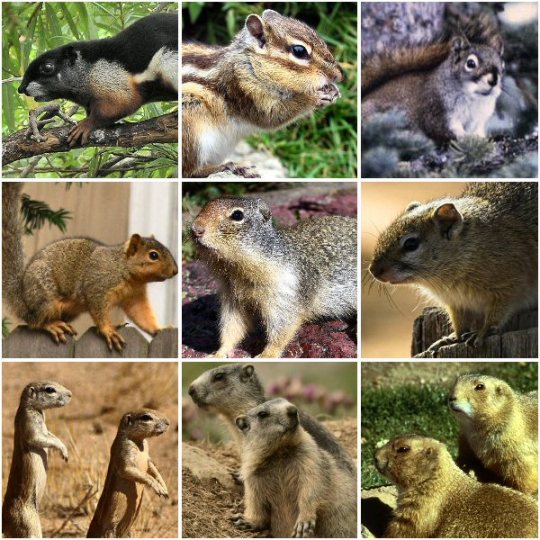
Various members of the family Sciuridae
Callosciurus prevostii
Tamias sibiricus
Tamiasciurus hudsonicus
Sciurus niger
Spermophilus columbianus
Xerus inauris
Cynomys ludovicianus
Scientific classification
Kingdom: Animalia Phylum: Chordata
Clade Synapsida
Class: Mammalia
Order: Rodentia
Suborder: Sciuromorpha
Family: Sciuridae
Fischer de Waldheim, 1817
Subfamilies and tribes
Subfamily Ratufinae
Subfamily Sciurillinae
Subfamily Sciurinae
Subfamily Callosciurinae
Subfamily Xerinae
Tribe Sciurini
Tribe Pteromyini
Tribe Callosciurini
Tribe Funambulini
Tribe Xerini Tribe Protoxerini Tribe Marmotini
and see text
2 notes
·
View notes
Text
Roedores
"
Roedores é como chamamos a ordem Rodentia. É dividida entre 30 famílias e mais de 2000 espécies, sendo provavelmente a ordem mais numerosa de mamíferos (chegam a representar 43% das espécies de mamíferos conhecidos). Mas a composição e número de táxons são alterados muitas vezes, depois dos estudos.
Os primeiros fósseis que temos é após a extinção dos dinossauros, há 65 milhões de anos atrás. As primeiras espécies são do antigo supercontinente Laurásia, depois houve colonização na África e posteriormente conseguiram chegar na América do Sul. Apesar dos marsupiais serem os primeiros mamíferos da Austrália, os roedores também chegaram e dominaram a fauna. A maior proporção desta ordem é encontrada na América do Sul, sendo que ela possui alguns gêneros e espécies endêmicas.
//<![CDATA[ googletag.cmd.push(function() { googletag.display('dfp-arroba-meio1'); }); //]]>
Distribuição geográfica
Originalmente estavam distribuídos em quase todo o mundo, exceto em algumas ilhas nos oceanos, na Nova Zelândia e na Antártida, porém, hoje foram introduzidos em toda parte. Como há uma grande variedade de espécies, elas divergem morfologicamente e ecologicamente, possuindo diversas adaptações, como em tamanho e peso, algumas com 5g, outras com até 80 kg; variam no tipo de habitat, alguns vivem a vida toda no subsolo, outras no dossel da floresta, alguns se adaptaram a uma vida urbana, como tipos de ratos, outros vivem no deserto e os encontramos até em meio aquático, como o castor.
Castor, uma espécie de roedor que vive em meio aquático. Foto: Procy / Shutterstock.com
Alimentação
A maioria das espécies são onívoras, mas existem aquelas que se alimentam só de plantas e outras que têm hábito especialista. Apesar de ser um grupo muito diverso, ele apresenta características em comum, como os dentes especializados para roer, possuem um único par de incisivos superiores (não possuem raízes, crescem continuamente) e um par inferior, não desenvolvido. Têm um par de superiores, com um ou mais pré-molares e molares. Nenhum roedor tem dentes caninos, ou mais de dois pares de incisivos. Quanto mais roem, os incisivos passam um no outro e ficam mais afiados, além de sofrerem desgaste.
//<![CDATA[ googletag.cmd.push(function() { googletag.display('dfp-arroba-meio2'); }); //]]>
Ecologia
A ordem rodentia tem um papel ecológico importante, uma vez que reproduz rápido e em grande quantidade, constituindo boa parte dos ecossistemas terrestres. Assim, contribuem para maior oferta de alimentos para predadores, uma vez que são presas de outros animais. Além disso, os roedores ganham destaque por muitas espécies possuírem populações desequilibradas, causando impactos ambientais, econômicos e na saúde humana, como a capivara, hospedeira do carrapato estrela, ou ratos que causam doenças, etc.
O músculo mais utilizado para estes animais roerem é o masseter, e a forma como o utilizam é que define a qual grupo de roedor o animal pertence.
Os ratos são um dos principais roedores presentes nas cidades. A urina desses animais é responsável pela transmissão de doenças como a leptospirose. Devido à abundância de alimentos para eles e rápida reprodução, são considerados uma praga urbana. Foto: Irina Kozorog / Shutterstock.com
Principais famílias e espécies
Está dividida em 5 subordens:
Sciuromorpha: Distribuída em 5 famílias entre porquinhos-da-índia, cobaias, preás, castor das montanhas, esquilos, marmotas, etc;
Castorimorpha: Dividida na Família Castoridae e na Família Heteromyidae ;
Myomorpha: Está em duas subfamílias e 5 famílias que englobam os ratos, hamsters, gerbils, camundongos, etc. Aqui se encontra a família Muridae, que é a maior dentro da ordem, apresentando mais de 650 espécies. Quem merece destaque aqui também, é a Família Spalacidae, que é representada por roedores fossoriais, com características bem peculiares.
Anomaluromorpha: Família Anomaluridae, oriundos da África e Família Pedetidae, representada pelas lebres-saltadoras.
Hystricomorpha: Dividida em duas infraordens e 18 famílias. O destaque aqui vai para família Bathyergidae, que possui olhos e orelhas reduzidas, com quase ausência de pelos e vivem em galerias subterrâneas. Também se encaixam as famílias de chinchilas, pacas, cutias, porcos espinhos, etc.
Famílias de roedores brasileiros:
Sciuridae, que é dos caxinguelês, esquilos, serelepe.
Dasyproctidae, que é das cutias (gênero Dasyprocta, com várias espécies);
Cuniculidae que é das pacas (Agouti paca);
Erethizontidae que é dos porcos-espinhos ou ouriços (Coendou prehensilis e Chaetomys subspinosus );
Caviidae que é das capivaras (Hydrochoerus hydrochaeris);
Murídae que é dos pequenos roedores, ratos e camundongos.
Referências:
https://animaldiversity.org/accounts/Rodentia/
R., R, Nélio et al. Livro: Mamíferos do Brasil, ed Eduel, ano 2006
S., F., Eliana. Ecologia da Cutia (Dasyprocta leporina) em um Fragmento Florestal Urbano em Campinas-SP. Tese de doutorado, Instituto de Biociências da Universidade Estadual Paulista“Julio de Mesquita Filho”, 2005.
The post Roedores appeared first on InfoEscola.
InfoEscola https://ift.tt/2YT4NtI Publicado primeiro em https://www.infoescola.com"
Este conteúdo apareceu primeiro em: https://ift.tt/2w0BWWY
0 notes